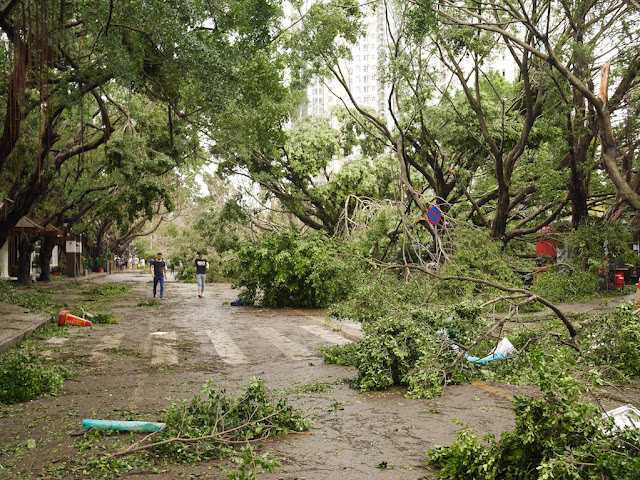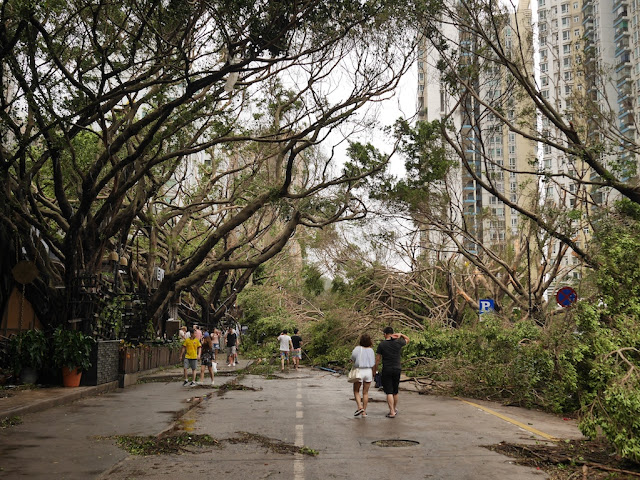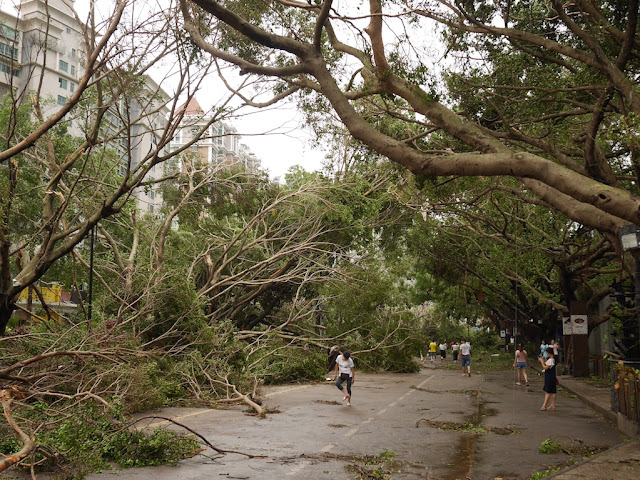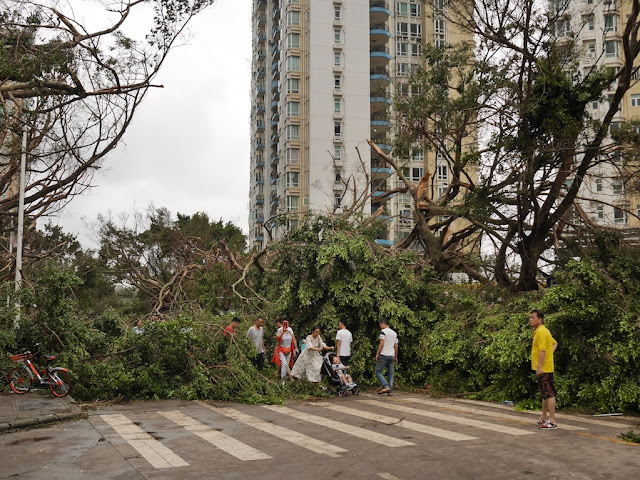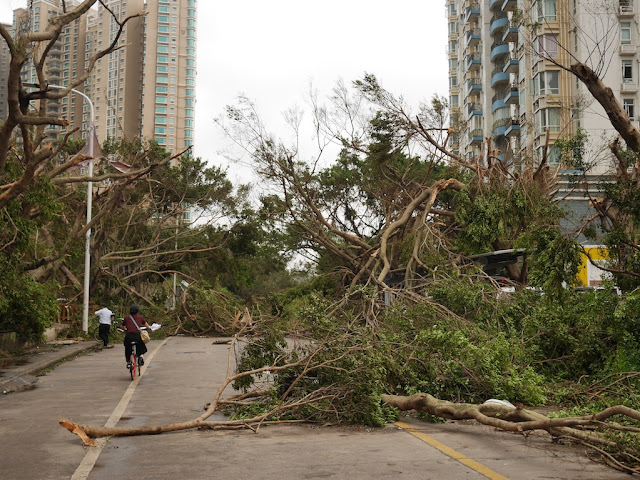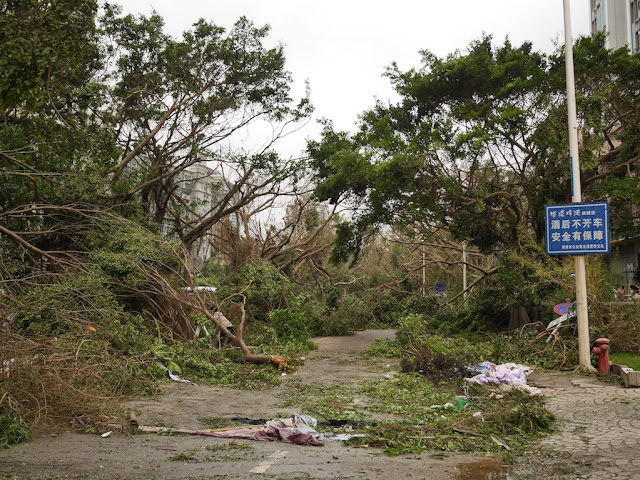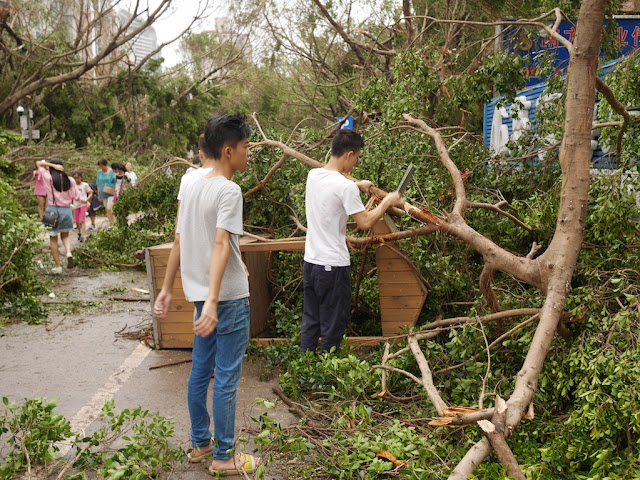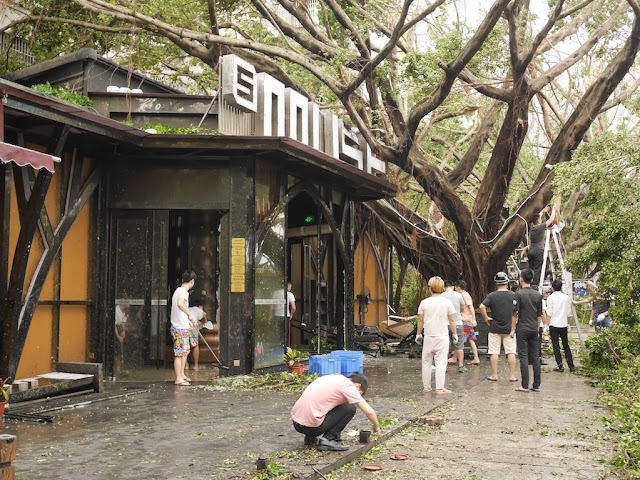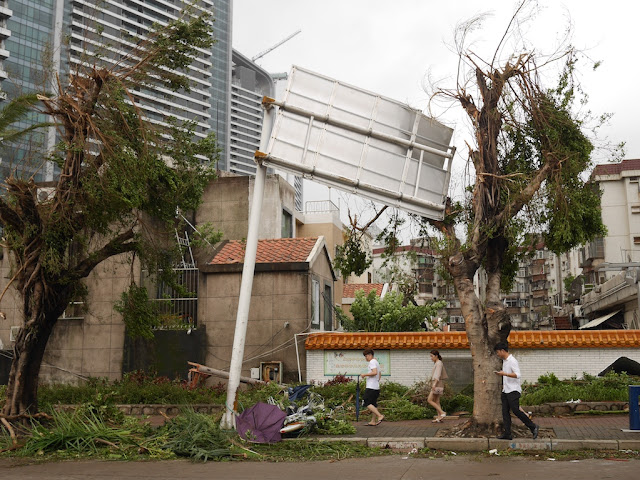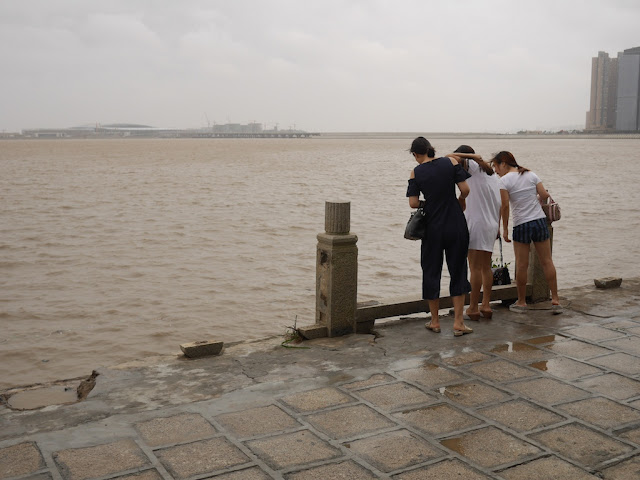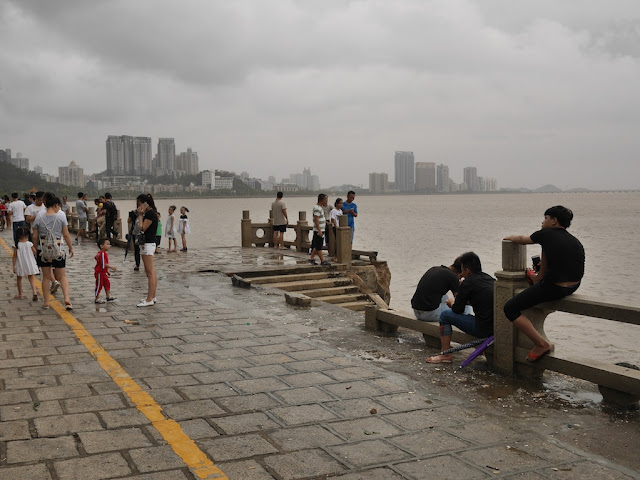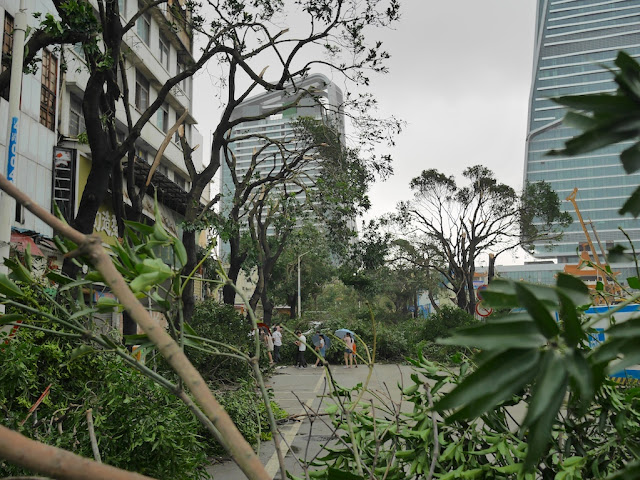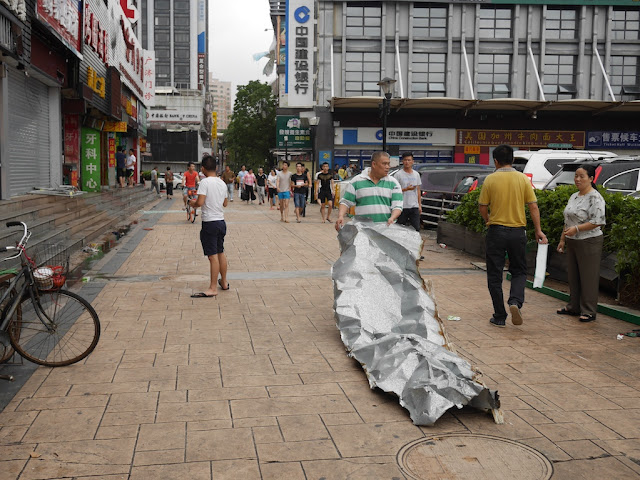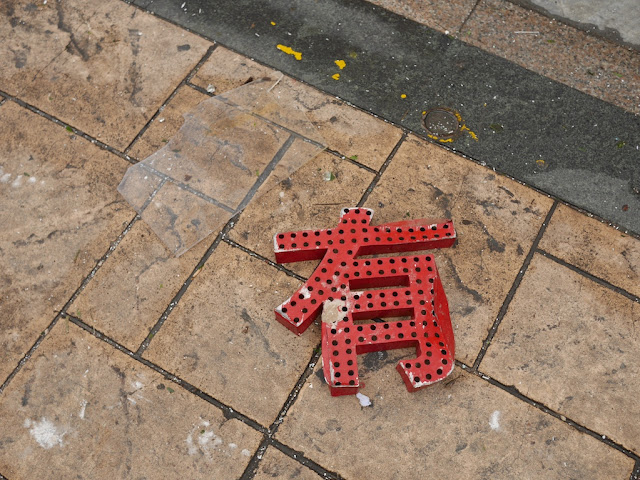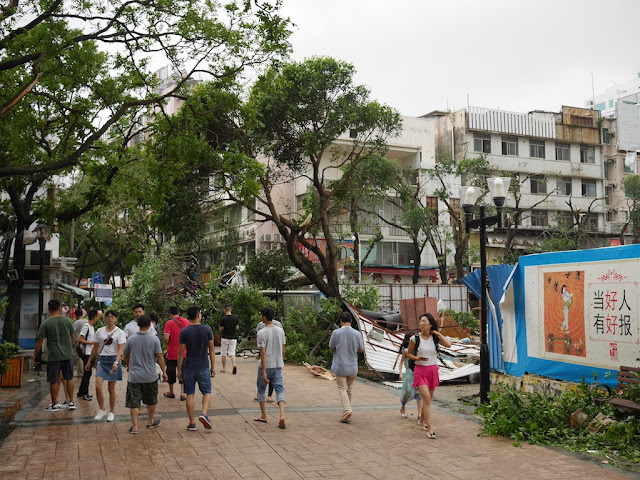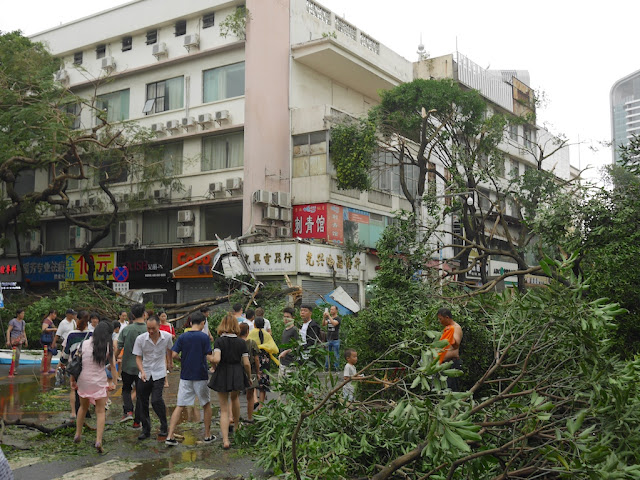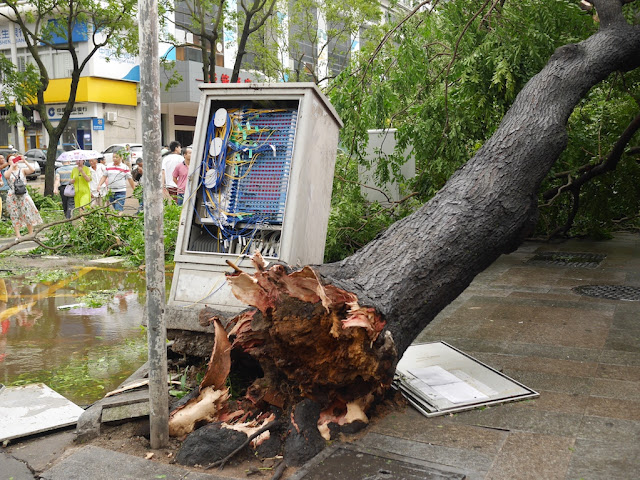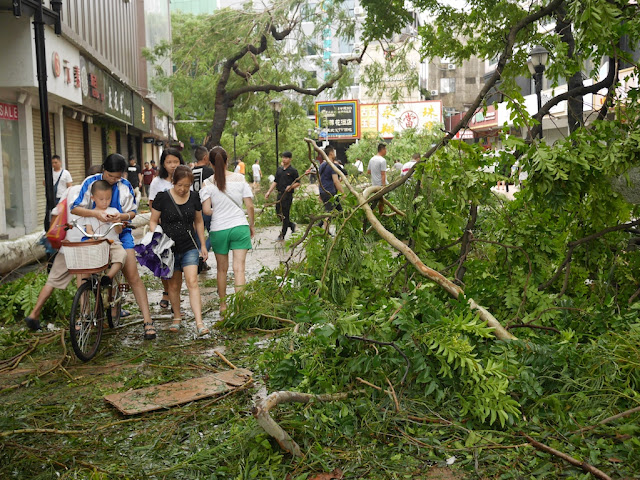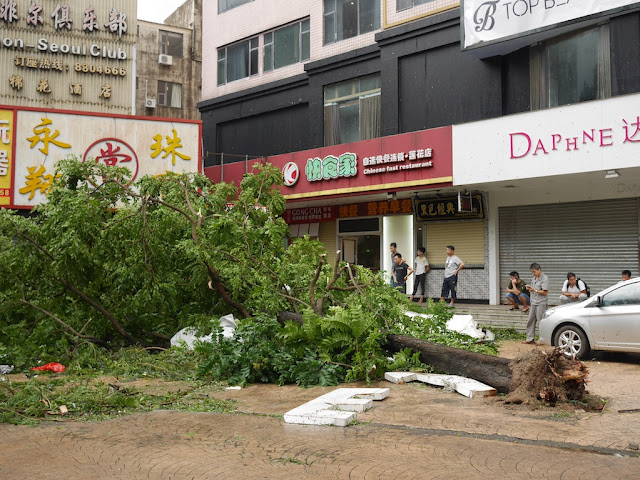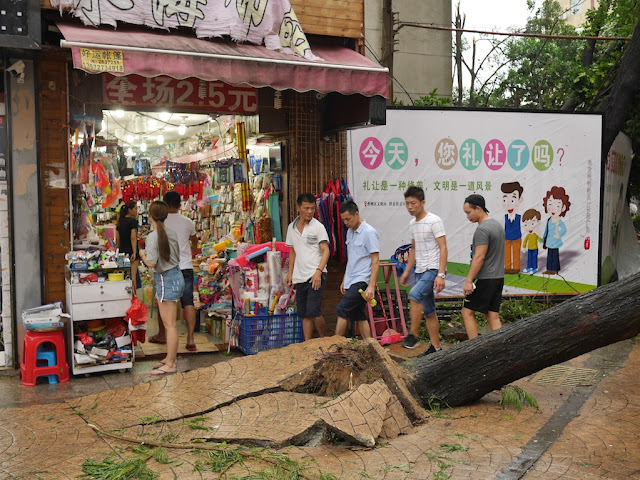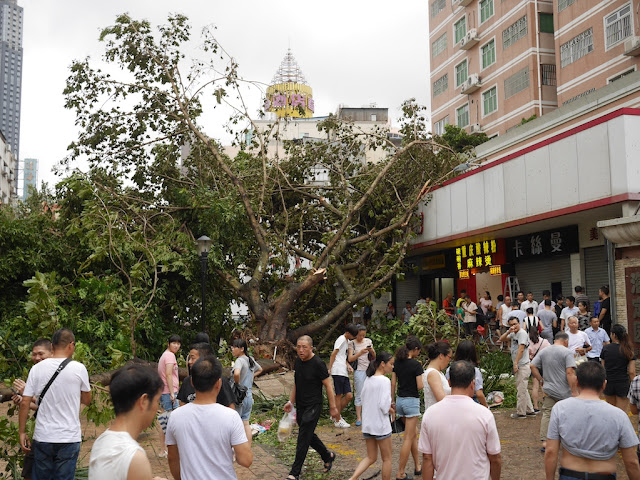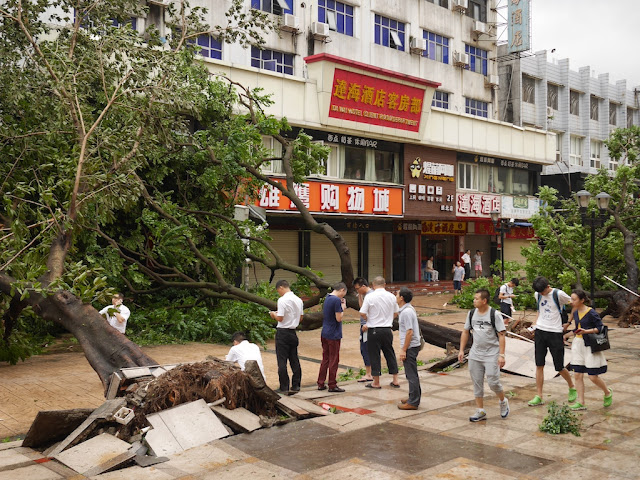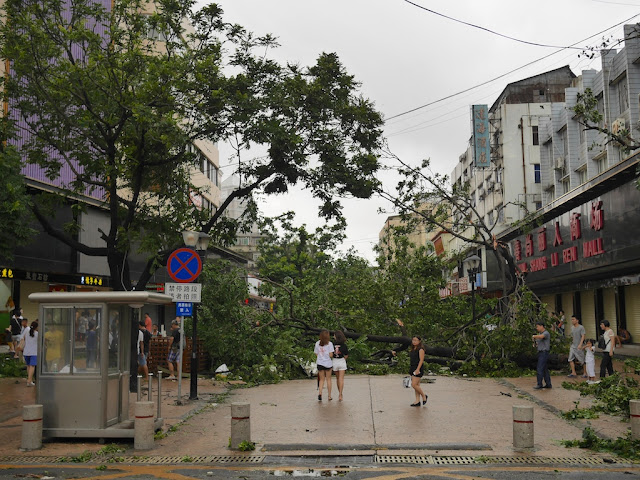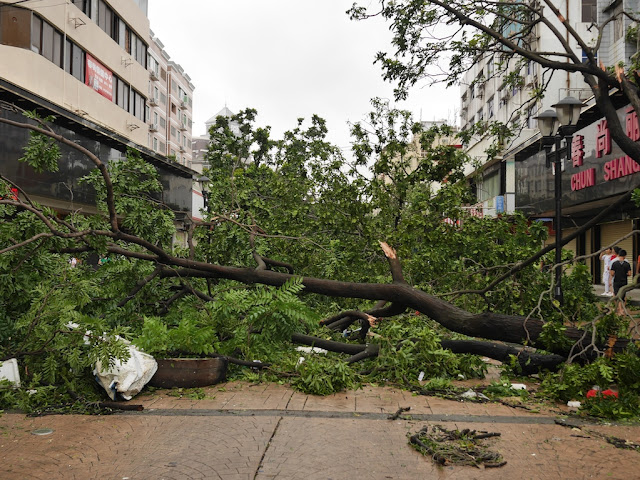Not long after finishing a post about
people giving nazi salutes in Germany and the U.S., I stopped by a pedestrian street in Bengbu, China, for some late night food and a break from the bad news. As I waited for my corn on the cob to be grilled at a food stand, I spoke to several locals. To my surprise, one person said he recognized me. Indeed, a mutual friend of ours had shared a photo including me.
Soon a young woman and a young man approached. The young woman introduced herself as an American. Her English wasn't fluent, and she spoke with a strong Chinese accent. She said she had been born in the U.S. in a way which suggested to me she hadn't grown up there, but I didn't inquire further. The young man was from Bengbu.
The light conversation soon meandered to American politics. I learned the young man liked Donald Trump. He then added he liked Clinton as well. From the context I assumed he meant Hillary Clinton. It was an interesting mix, but again I didn't inquire further. I just hoped my corn would finish cooking soon.
A little later when it came up that I liked Barack Obama, the young man quickly replied he did not.
Somebody saying they liked Trump and Clinton but not Obama truly piqued my curiosity, corn or no corn. So I asked, "Why don't you like Obama?"
With a self-satisfied smile, he cheerily replied in English, "Because he's a nigger."
I looked away to gather my thoughts. After a brief moment, I turned towards the young woman and said, "Please take him away."
Her reaction suggested she understood why I had made the request. In any case, without any further words exchanged she walked away with him. A few moments later I glanced back and saw them talking. I hoped the young woman was able to explain things to some degree.
I have no illusions about the amount of racism in China. There's a lot. And many times when I have come across it in individuals, I have tried to better understand and constructively push back. I have never responded like I did the other night in Bengbu before, but the choice of words and manner of delivery hit me. In the heat of the moment in an informal setting, I sought a way to make an impression that might have some tiny bit of positive impact when, admittedly, I wasn't sure I was in the right frame of mind for constructive conversation.
A few years ago in Chongqing, China, I met another young man who also expressed he didn't like black people. In that case, I engaged in conversation, but what followed also
caught me by surprise:
After I pushed back against some of his following points, he sat quietly in thought, and I wondered if I had made an impression. A minute or so later he broke his silence and asked, "Are there people in America who don't like black people?"
I replied, "There definitely are." I assumed he was curious about racial issues in the U.S. So I thought it could be valuable to shed some light on the immense challenges the country still faces, despite recent progress.
But before I could continue, he triumphantly declared, "You see. So I'm right."
And so I must question whether the young man in Bengbu would have expressed himself in the same manner without news such as that about white nationalists and white supremacists in the U.S. making its way to China. I don't doubt racism would exist in China without any American influence. But perhaps some in China feel emboldened by what they see happening in the U.S. now. As somebody who would hope the U.S. could use its soft power for good, it is an especially troubling question to consider.






